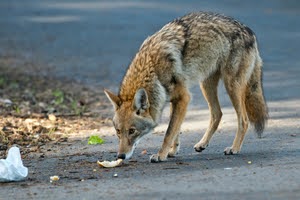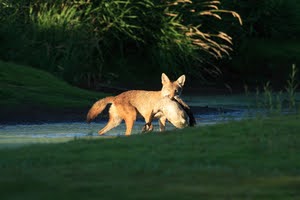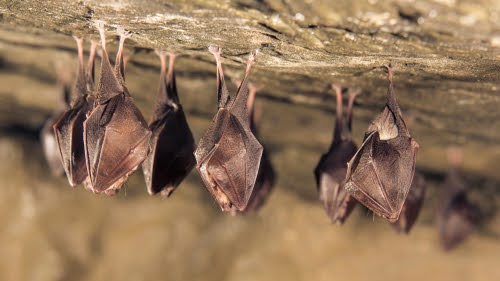Coyotes are a growing concern for pet owners, especially in suburban and urban neighborhoods where these adaptable predators have learned to thrive. Coyotes are omnivorous scavengers, but they’ll prey on small pets like house cats and small dogs if given the chance. The most common time for a coyote to attack a pet is during mating season (between January and March). This is due to the coyote defending its territory.
Even if you don’t often see wildlife near your home, coyotes may be closer than you think. Here are four effective ways to keep coyotes away from your house and protect your pets from becoming prey.
4 Ways to Keep Your Pets Safe From Coyotes
1. Remove Food Sources From Your Yard
Coyotes usually aren’t attracted to neighborhoods just to hunt pets; they’re looking for easy food sources. Coyotes are opportunistic eaters, meaning they’ll scavenge for any accessible food, from fallen fruit to garbage and compost piles. The smell of meat, bones, or pet food left outside can quickly draw a coyote to your yard. Try these tips to remove or secure food sources:
- Keep Garbage Secure: Tie garbage cans closed with bungee cords and keep all waste in sealed bags.
- Clean Up Pet and Bird Food: Avoid feeding your pets outside, and make sure bird feeders aren’t dropping seed onto the ground.
- Remove Fallen Fruit: Regularly clean up fallen fruit to prevent it from rotting and attracting coyotes.
- Eliminate Excess Water Sources: Coyotes are also drawn to accessible water sources, so fix any plumbing leaks or puddles and prevent standing water from building up.

2. Limit Your Pet’s Outdoor Time During Coyote Hunting Hours
Coyotes are primarily active at dawn, dusk, and night, as they prefer low-light hours to hunt and scavenge unnoticed. These times—when coyotes hunt most often—are also when pets are most at risk. To keep pets safe from coyotes:
- Keep Pets Inside at Night: Avoid letting cats or small dogs roam outside unsupervised after dark.
- Supervise Pets During Peak Hours: If your pet needs to go out early in the morning or after dusk, go with them and keep them close.
- Avoid Feeding Pets Outdoors: Coyotes are liable to be drawn to leftover food, so feed pets indoors to avoid luring coyotes in.
In general, avoid leaving pets outside for extended periods, especially if they’re unsupervised. Coyotes can be bold, particularly in urban areas, and may jump low fences to reach pets or pet food.

3. Clear Out Potential Hiding Spots
Urban coyotes are often shy and prefer to avoid direct contact with humans. However, they’re more likely to venture into yards that offer cover, such as tall grass, dense bushes, or other shaded areas. Removing hiding spots helps make your property less attractive to coyotes. Here’s how to reduce cover:
- Keep Grass and Bushes Trimmed: Trim tall grass and cut back thick bushes where coyotes could hide or move undetected.
- Seal Off Under Structures: Block access under decks, porches, and sheds to prevent coyotes from taking shelter.
- Store Firewood Securely: Stack firewood in an enclosed space rather than outdoors, where it could become a makeshift den.
By limiting cover, you discourage coyotes from feeling comfortable in your yard, which helps protect pets.

4. Scare Coyotes Off
Coyotes are naturally skittish animals, so making your yard feel intimidating can be an effective deterrent. Here are some ways to scare off coyotes:
- Use Loud Noises: If you see a coyote near your property, shout, clap, or stomp your feet to startle it. Wave your arms to appear larger and more intimidating.
- Install Motion-Activated Deterrents: Motion-sensor lights, sprinklers, or sound-producing devices can startle coyotes that venture too close at night.
- Don’t Run Away: If you’re faced with a coyote, maintain eye contact, back away slowly, or even walk toward it with confidence. Never turn your back or run, as this may trigger a chase.
If a coyote in your area seems aggressive or unafraid of humans, contact local animal control immediately. Aggressive coyotes may bark, growl, or stalk pets, which could signal a serious risk.
Protecting Your Pet from Coyotes with Varment Guard

Coyotes may be common in urban and suburban settings, but you can protect your pet and deter these predators with a few proactive measures. If you have a persistent coyote problem or want help making your property less attractive to coyotes, Varment Guard can help. Our experts offer effective solutions, including live trapping and property exclusion measures to keep coyotes away permanently. Contact us today to learn more about our coyote deterrent services and how we can help protect your home and pets.







